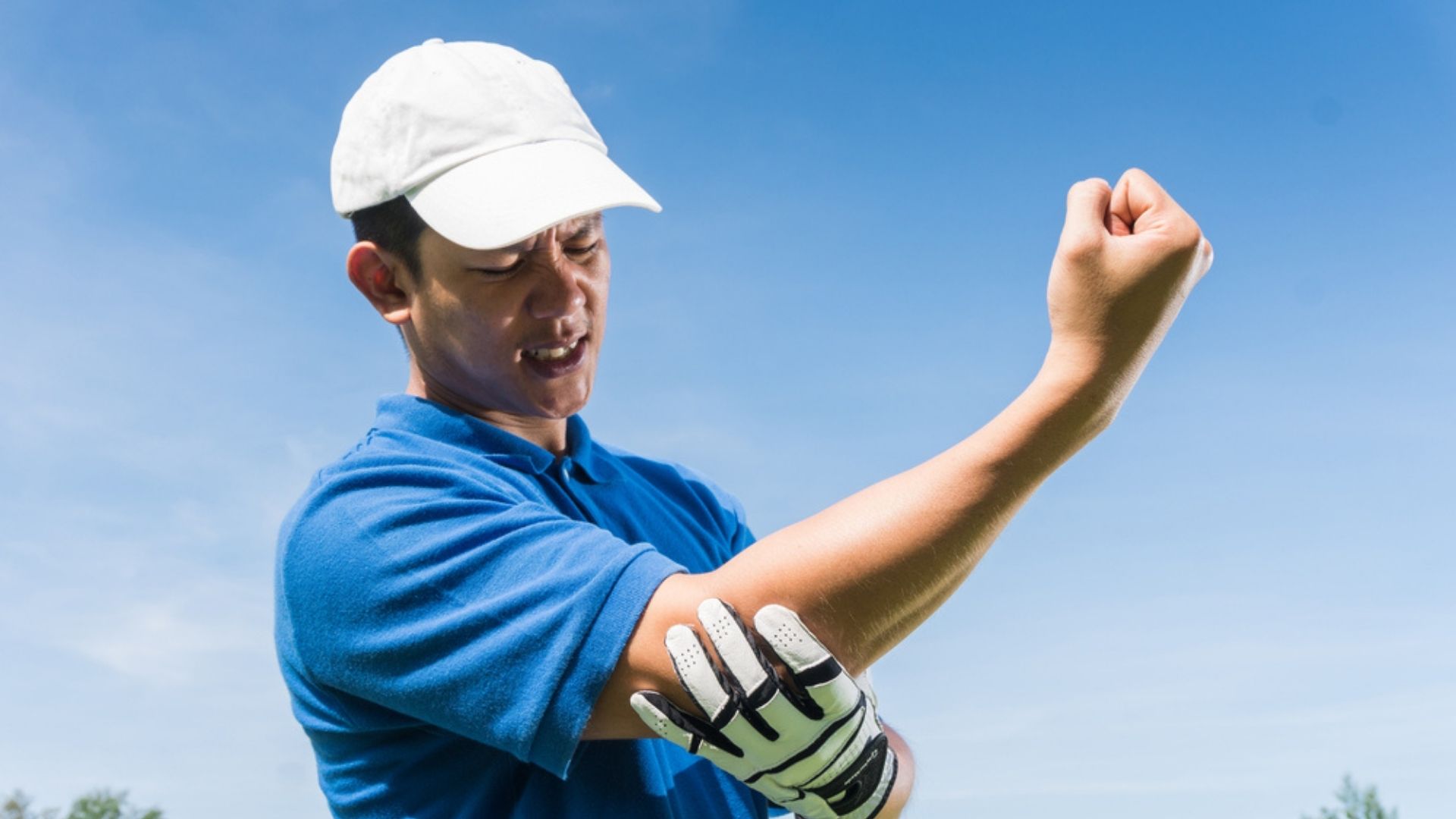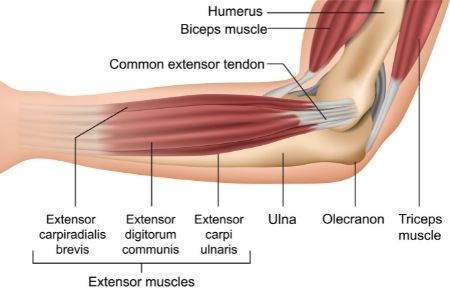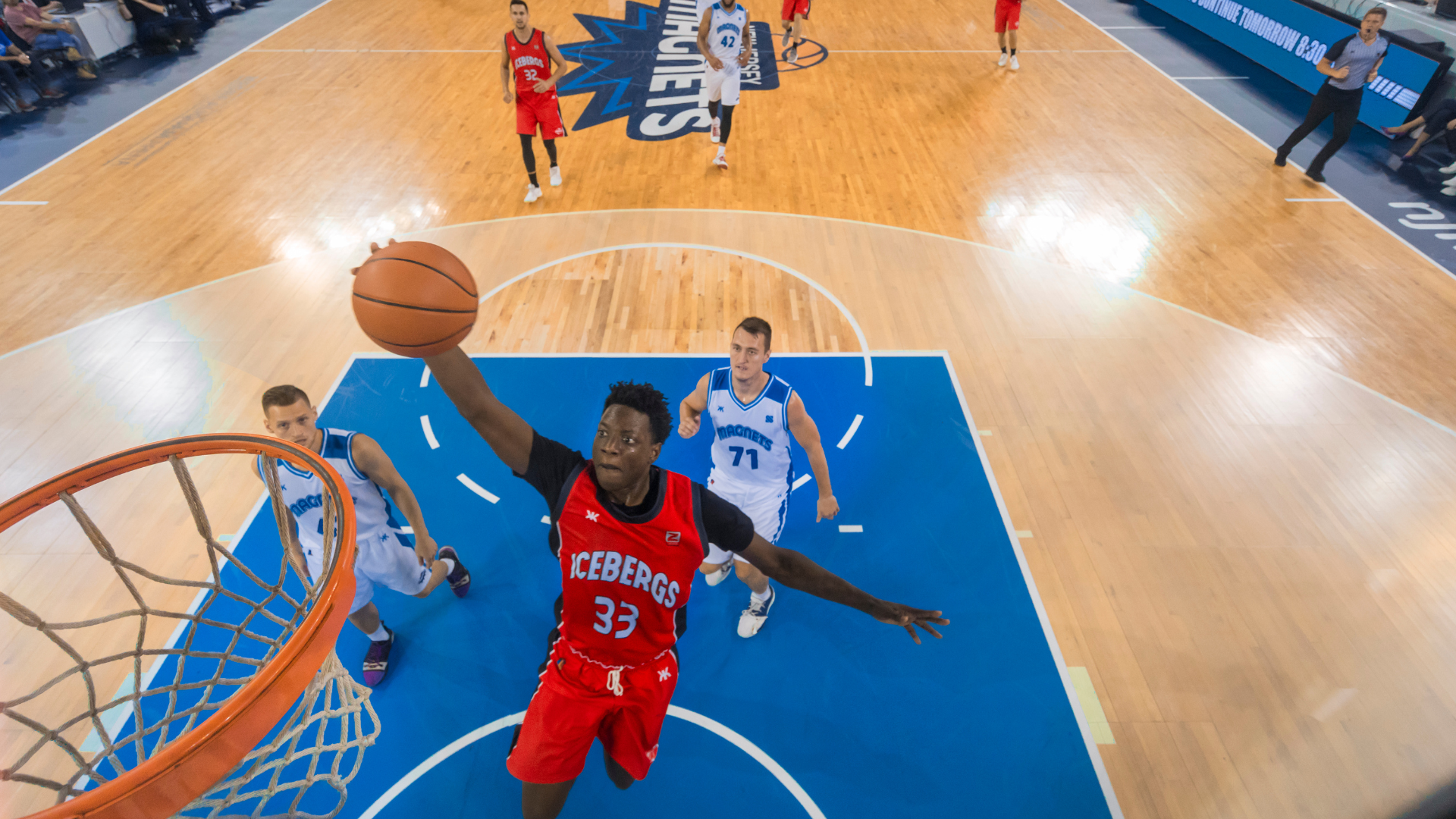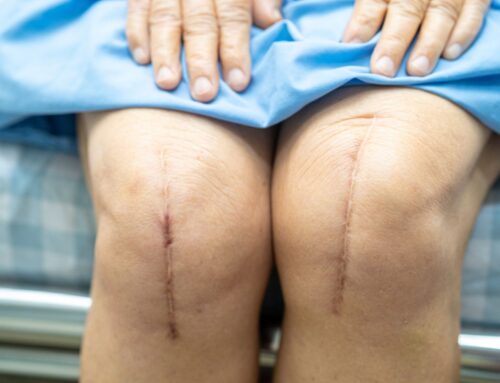The elbow is a small but complex joint that allows us to perform a host of movements with our forearms and hands. Just think about your golf swing, a jump shot, reeling in a fish or even opening a tin can. Injury and disease can lead to persistent elbow pain that may require medical attention. In this article, we look at the most common causes of elbow pain, how to tell if your elbow pain is serious, tips for injury prevention, as well as elbow pain treatment.
How Does the Elbow Work?
Your elbow is a joint formed where three bones come together – your upper arm bone, called the humerus, and the ulna and the radius, the two bones that make up your forearm. Each bone has cartilage on the end, which helps them slide against each other and absorb shocks, and tendons connect your bones to muscles to allow you to move your arm in different ways.
Your elbow is a complex joint; it allows you to both extend and flex, as well as rotate your hand and forearm. Since most movements are a combination of these actions, you may sometimes find it difficult to describe exactly which movement brings on the pain.
What Are the Most Common Causes of Elbow Pain?
Elbow pain is often caused by overuse. Many sports, hobbies and jobs require repetitive hand, wrist or arm movements. Elbow pain may occasionally be due to arthritis, but in general, your elbow joint is much less prone to wear-and-tear damage than are many other joints.
Some of the more common causes of elbow pain are the following:
- Elbow bursitis (joint inflammation) occurs in the olecranon bursa, a thin, fluid-filled sac that is located at the boney tip of the elbow (the olecranon). Normally, the olecranon bursa is flat. If it becomes irritated or inflamed, more fluid will accumulate in the bursa and bursitis will develop. Learn more about elbow bursitis treatment, symptoms and causes.
- Dislocated elbow occurs when any of the bones of the elbow (ulna, radius or humerus) are forced out of their normal position. This typically occurs from a fall on an outstretched hand or trauma from sports or motor vehicle collisions. A deformity, inability to move the elbow and elbow instability are typical of elbow dislocations.
- Golfer’s elbow, or medial epicondylitis, is a painful condition caused by inflammation or, in some cases, micro tearing of the tendons that join the forearm muscles on the inside of the elbow. Learn more about golfer’s elbow treatment, symptoms and causes.
- Osteoarthritis (disease causing the breakdown of joints) can occur in any of the joints in the body. This occurs when the cartilage surface of the elbow is damaged and can occur from a previous injury, or due to normal aging and activity of the joint. Pain and stiffness are symptoms of elbow osteoarthritis.
- Osteochondritis dissecans (bone and cartilage injury) is a condition that occurs in adolescent athletes who engage in sports such as hockey or baseball. Inflammation the cartilage and underlying bone can result in loose bodies within the elbow joint leading to pain, instability, loss of movement and stiffness in the joint.
- Rheumatoid arthritis (inflammatory joint disease) is an autoimmune condition causing pain, swelling and tenderness in the joints. In RA, elbow arthritis is symmetrical and is one of the first joints to be affected. Progression can lead to compression of nerves around the elbow joint.
- Sprains of the elbow occur when you overstretch or tear one of the ligaments around the elbow. Many elbow sprains are caused by repetitive motions that can occur with when using tools, playing golf or playing tennis.
- Stress fractures of the elbow occur in the olecranon area, and are most seen in throwing athletes, beginning with a slow, gradual onset of symptoms.
- Elbow tendinitis refers to inflammation of the tendons and connective tissue around the elbow. This occurs due to overuse or overloading of the elbow caused by repetitive forces. Muscles imbalances and improper technique can lead to tendonitis.
- Tennis elbow, or lateral epicondylitis, is a painful condition caused by inflammation or, in some cases, micro tearing of the tendons that join the forearm muscles on the outside of the elbow. Learn more about tennis elbow treatment, symptoms and causes.
- Throwing injuries can occur due to repetitive actions of the muscles of the elbow that lead to irritation and pain on the inside or outside parts of the elbow. There are many types of injuries that can occur due to repetitive throwing.
- Trapped nerves can cause pain, weakness, numbness or tingling in the arm, wrist and hand. Nerves can become compressed as they pass through the wrist or elbow joint.
How Do I Know If My Elbow Pain Is Serious?
You should seek medical attention if you are experiencing any of the following:
- Severe pain, swelling and bruising around the joint
- Trouble moving your elbow normally, using your arm or turning your arm from palm up to palm down and vice versa
- Elbow pain that doesn’t improve
- Pain that occurs even when you’re not using your arm
How Are Elbow Injuries Diagnosed?
Your physiotherapist will consider many factors in making a diagnosis. These include how your symptoms developed, any occupational risk factors, and recreational sports participation. They will discuss what activities cause symptoms and where on your arm the symptoms occur.
During the assessment, your physiotherapist will use a variety of tests to pinpoint the diagnosis. For example, they may ask you to try to straighten your wrist and fingers against resistance with your arm fully straight to see if this causes pain and other such movements.
Elbow Pain Prevention
There are many different things you can do to prevent elbow injuries, but this often depends on the individual’s occupation and activities. For example:
- Sports – warming up before activity, learning proper technique and strengthening forearm muscles
- Occupation – Adjusting work station, rotating tasks, taking regular breaks, avoid leaning, and avoid lifting heavy loads repetitively.
Elbow Pain Treatment
Propel’s physiotherapist will complete a thorough assessment to help diagnose your elbow pain. Once the assessment is complete, they will help you create a well-structured program so that you can return to daily activities, as well as sports and other recreational pastimes.
Elbow pain treatment often includes education about the injury, modifications you can make to your activities, and exercises that will help to both manage pain and help to increase the strength and flexibility of the area involved.
Written by


















